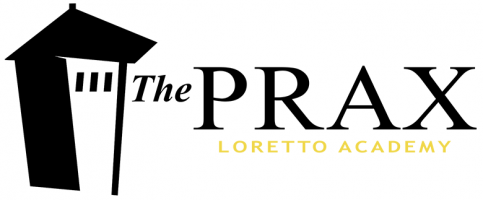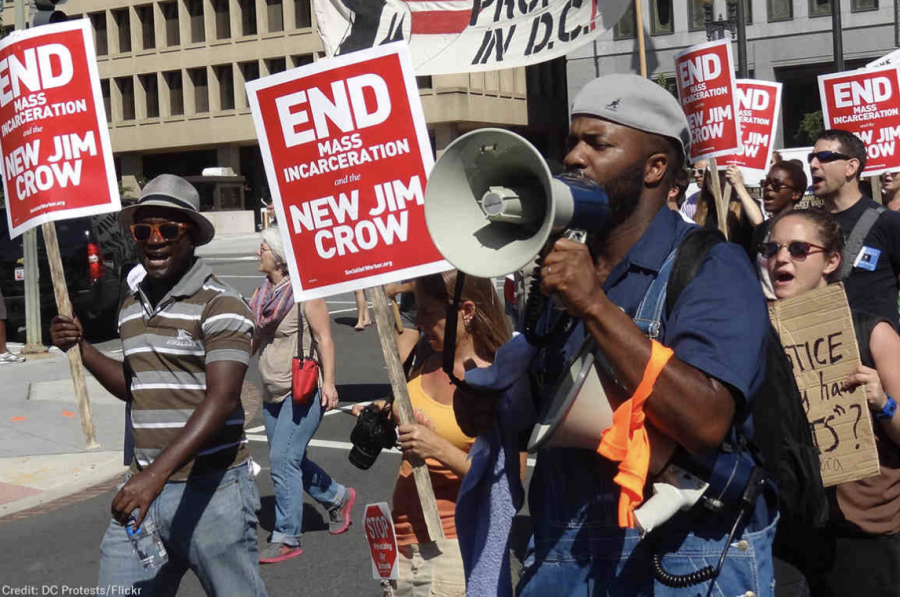US Mass Incarceration: then, now
The fight for ending mass incarceration has been a long one. A 2019 protest of mass incarceration with dozens of people holding posters saying ‘END MASS INCARCERATION AND THE NEW JIM CROW’.
March 12, 2021
It seems as if the response to the end of the Jim Crow Laws was mass incarceration, the new way to defer African Americans of their rights.
Black History Month was in February, however Black History Month should be every month, therefore something must be said about the criminal justice system that is extremely racially biased.
Mass incarceration is just one of the dozen effects of systematic racism.
It is all part of the snowball effect that entails having systematic racism in the root of the country.
The well known phrase of the Declaration of Independence of “Life, liberty, and the pursuit of happiness” seems to not be applicable to African Americans as they are deprived of having such things by the justice system.
The statistics of mass incarceration are extremely alarming.
African Americans hold 34% of the prison population while they are 13% of the general population.
According to Harvard Business Review, 60% of the 2.3 million people in US prisons, jails and detention centers, are Black or Latinx.
The US has the world’s highest incarceration rates.
According to Northwestern Edu, the US incarceration rate is four to eight times higher than those in other liberal democracies.
America has about 4.25% of the world’s population and about a quarter of the world’s prison population.
There is a reason why these infographics are so alarming.
This all occurs by the state making arrests for minor drug crimes, over-policing black neighborhoods, and encouraging black citizens to take plea bargains rather than going to trial.
As if it wasn’t enough already, these ex-convicts are treated like second class citizens after serving time.
In some cases they are unable to vote, they suffer from lack of education and job opportunities, have no unemployment benefits, no food stamps, etc.
Junior Mariana Murguia said, “I think that mass incarceration is an issue that the whole country is supposed to be in favor of changing.
History is repeating itself before our very own eyes.
It is something sad and frustrating to see how the people that are supposed to lead and protect us, are the ones doing us the most harm.”
Professor Reuben Jonathan Miller is the author of Halfway Home: Race, Punishment and the Afterlife of Mass Incarceration, a book that highlights the many issues that entail with mass incarceration.
Miller said, “The state of health care inside American jails and prisons is dismal. They’ve long been clusters for all kinds of chronic and communicable diseases, including HIV…Formerly incarcerated people are 11 times more likely to die within the first two weeks of their release from any cause than are members of the general population.”
Reuben Jonathan Miller argued in his book that administrations have the power to change policies.
He wrote his book in a span of three administrations and he said that the issues still managed to stay accurate.
With Biden’s administration work has already begun towards alleviating and hopefully terminating later on mass incarceration.
President Biden directed the Justice Department to end its relationship with private prisons.
Biden called it a first step to address “systematic problems in our criminal justice system.”
Hopefully that is not the first and last step for this pending issue.
Society is in dire need of a call to action.
This subject has never been touched in school before, I learned it from social media and news articles.
It is an issue that the educational system should be talking about.
A call to do something about this problem–getting informed, sharing the knowledge with others, signing petitions, helping organizations, etc.
The Jim Crow Laws were abolished but not clearly not completely, making change an extremely important action.





